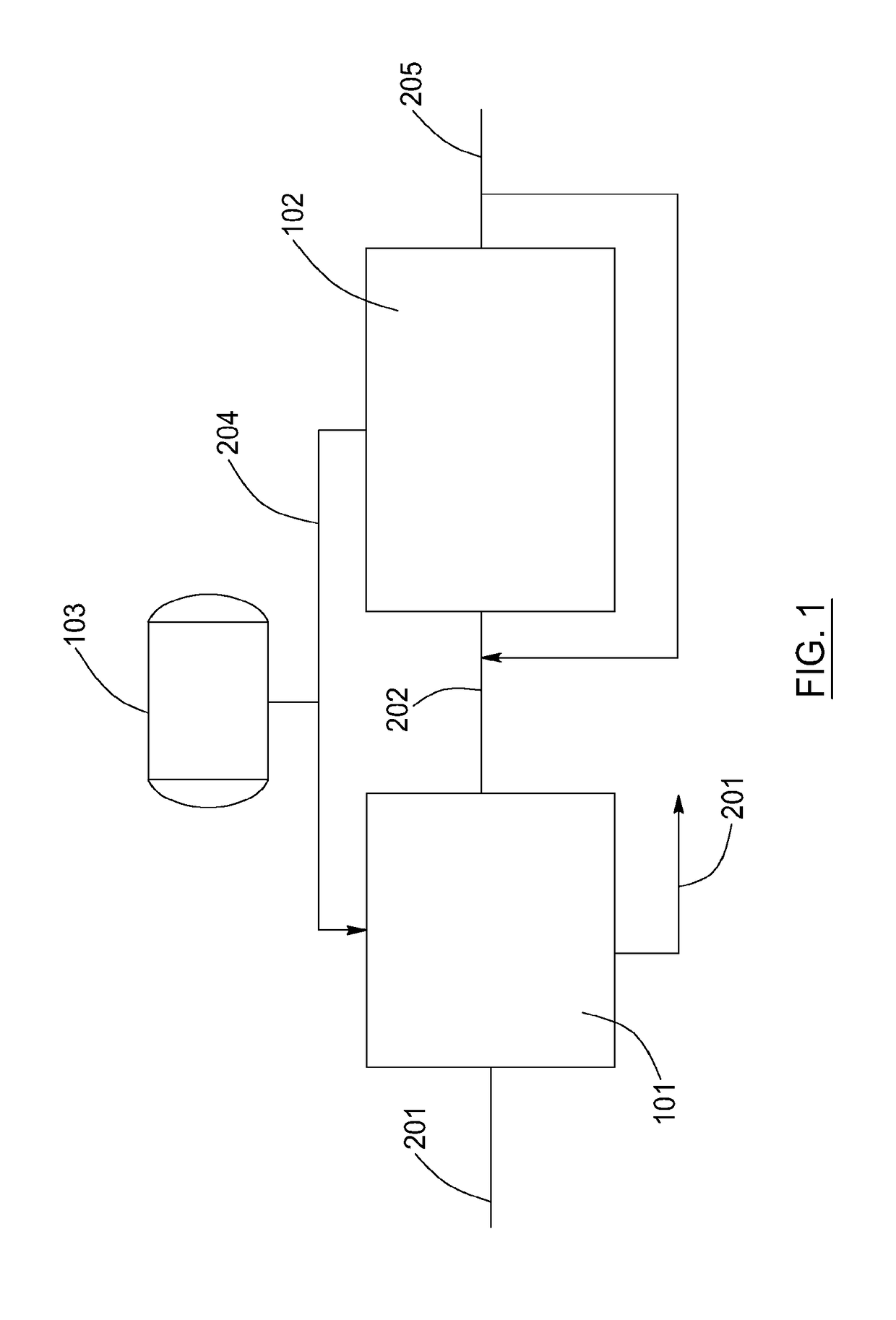Process for Treating High Paraffin Diluted Bitumen
a high paraffin diluted and bitumen technology, applied in the field of oil sands bitumen froth processing, can solve the problems of equipment fouling, high feed temperature, and inability to increase linearly the solubility of asphaltene in paraffinic solutions, so as to reduce the loading of contaminants
- Summary
- Abstract
- Description
- Claims
- Application Information
AI Technical Summary
Benefits of technology
Problems solved by technology
Method used
Image
Examples
Embodiment Construction
[0114]Referring to FIGS. 1 and 2, the following is a parts list for elements illustrated therein:
Equipment / Plant:
[0115]101 Froth Separation Plant
[0116]102 Solvent Recovery Plant
[0117]103 Hot Diluent Storage
[0118]104 Feed / Bitumen Product Heat Exchanger
[0119]105 Feed / Flash Heat Exchanger
[0120]106 Feed / Bitumen Product Heat Exchanger
[0121]107 Flash Vessel
[0122]108 Flash Vessel Recycle Pump
[0123]109 Flash Vessel Feed Heater
[0124]110 Flash Vessel #2
[0125]111 Bitumen Column Feed Pump
[0126]112 Bitumen Column Feed Heater
[0127]113 Bitumen Column
[0128]114 Bitumen Product Pump
[0129]115 Water Draw Off Pump
[0130]116 Column Condenser
[0131]117 Column Separator
[0132]118 Column Solvent Pump
[0133]119 Recovered Water Pump
[0134]120 Flash Solvent Drum
[0135]121 Flash Solvent Pump
[0136]122 Flash Solvent Condenser
[0137]123 Condensed Solvent Drum
[0138]124 Condensed Solvent Pump
Lines and Valves:
[0139]201 Bitumen Froth
[0140]202 High Diluted Bitumen
[0141]203 Froth Separation Tailings
[0142]204 Hot Recycled Solve...
PUM
| Property | Measurement | Unit |
|---|---|---|
| temperatures | aaaaa | aaaaa |
| temperatures | aaaaa | aaaaa |
| weight percent | aaaaa | aaaaa |
Abstract
Description
Claims
Application Information
 Login to View More
Login to View More - R&D
- Intellectual Property
- Life Sciences
- Materials
- Tech Scout
- Unparalleled Data Quality
- Higher Quality Content
- 60% Fewer Hallucinations
Browse by: Latest US Patents, China's latest patents, Technical Efficacy Thesaurus, Application Domain, Technology Topic, Popular Technical Reports.
© 2025 PatSnap. All rights reserved.Legal|Privacy policy|Modern Slavery Act Transparency Statement|Sitemap|About US| Contact US: help@patsnap.com



